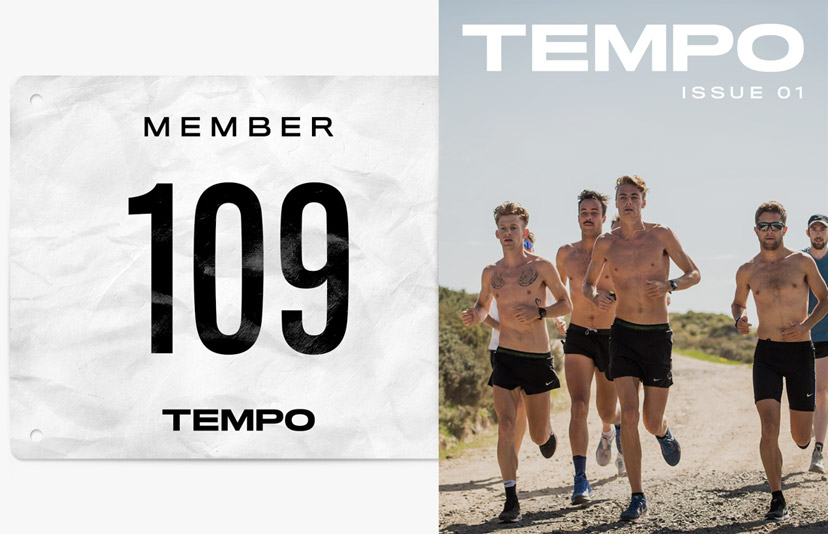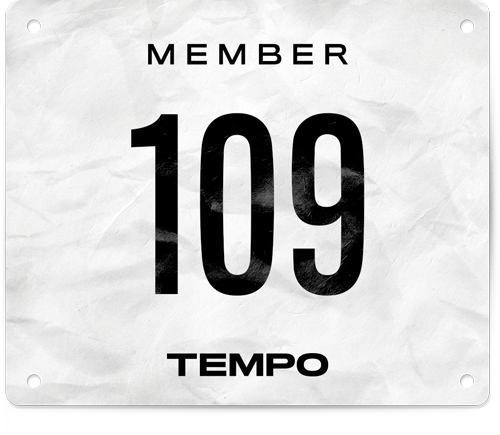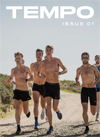Lifestyle
The Line: Adapt and thrive
How this group of athletes have risen to the challenge
Editor's Note: Much of this program has taken place under strict guidelines from the Victorian State Government around social distancing. Any imagery showing multiple athletes was captured throughout February and early March, before such guidelines were in place. Athlete safety has been, and will continue to be our first priority.
“Running is not a sport you can bullshit, and you can't get good at it in 6 to 8 weeks. Think long term and you can train with a hell of a lot of purpose,” Nike Running Coach Dave Ridley says down the phone.
Saying he’s incredibly optimistic about where the sport might emerge in 12 months, Dave believes the coronavirus pandemic has thrown runners a massive opportunity: forget races for a while and just train.
But that’s not exactly the scenario for The Line, the 11 female athletes Dave is coaching with fellow Kiwi and Nike Running Coach Lydia O’Donnell. When we introduced this joint TEMPO and Nike project in February, it had its sights on the Great Ocean Road half marathon in May. The Line was inspired by Nike’s launch of the React Inifinity Run and their goal to help all runners get smarter with a combination of the right product and right coaching.
But then the world turned upside down. No one is allowed to train in groups. There isn’t a major race scheduled anywhere right now. The Line has had to convert its goal to running 21.1km solo time trials.
So – for our runners, and for the sport itself – we wanted to find out how athletes can keep their training and mental health on course during such a strange time. Fortunately, The Line project offered the perfect petri dish to study the current mutations in our sport: it provided 2 elite running coaches, 11 athletes with different goals for their half marathons, and access to 2 sports scientists, both professors in top Australian universities.
The Line had about 5–6 weeks, nearing the halfway mark, of face-to-face training before lockdown kicked in across Australia. Before that, the athletes were meeting Thursdays for speed work and Sundays for long runs, on top of personal sessions laid down by Lydia and Dave.
“Before isolation we were all getting together for long runs and although they were running at different paces they were all on the road together and could encourage and support each other,” Lydia explains.
“Everyone’s missing the social aspect,” participant Monica Clarke admits.
Raised in Melbourne, Clarke is a track star who’s used to running fast over short distances: 400m, 400m hurdles and 800m – the half marathon is a new distance for her to compete at.
Monica says she’s enjoying the transition: “It's definitely harder but timewise it's actually better.” Track training used to mean long periods of waiting around, punctuated by hurdles drills and longer runs. Now, longer runs actually mean less time on the clock.
During isolation, The Line athletes follow individual plans their Nike Running coaches give them by email, and shout encouragement to each other from the virtual sidelines of WhatsApp, especially after teammates post their runs. They're also keeping training fresh by using the Nike Run Club app to listen to audio guided runs, and keep tabs on the group leaderboard.
“There’s always banter flying around on the WhatsApp group and it’s pretty amazing to see that the girls have built out a community for themselves so that not only are they supporting themselves but they’re also reaching out and inspiring one another,” Dave says.
Athlete Paige Gilchrist ran cross-country and track five years for Northern Arizona University before recently moving to Melbourne. In January she ran her first marathon, in Hobart, Tasmania. She didn’t work with a coach in the lead up and, by her own admission, her plan of attack was somewhat ill defined. Even so, she placed second with 2:45:33, just missing the qualifying time for the US Olympics Trials.
Being asked to join The Line and having coaches again “has been so good,” Paige says.
“I'd been telling myself before the marathon if I don't break 2:45 maybe I want to look at getting a coach – because I want to get quicker and maybe that means I don't know how to train myself – but if I do break 2:45 maybe I want a coach because then I want to break 2:35 and I might need someone to help me.”
Phoebe Di Tommaso is another athlete loving how The Line coaches are taking her running to another level. Phoebe competed in figure skating throughout her teens and says running was “almost a form of punishment” added to her training regimen for weight control. Since then she’s worked as a personal trainer, including for Nike Training Club, and has run several half marathons, but considers herself a recreational runner.
“I've been surrounded by people who are faster than me for a long time. It's inspirational but I wouldn't say aspirational,” Phoebe laughs.
“I've never had a coach for my running ... I've never had someone specifically going, ‘All right, this is what we're doing this week and this is what you should be feeling. This is the session that you're doing and this is the reason why.’”
For those who aren’t lucky enough to have access to a personal coach, we reached out to member of the Nike Sports Research Lab advisory board Professor Aaron Coutts, who is also the head of the School of Sport, Exercise and Rehabilitation at the University of Technology Sydney and an expert on load management. Dr Coutts says some simple measurements can yield surprisingly powerful analytics.
Begin by tracking your training schedule for the week, measured as duration or distance. Against that, track a Rate of Perceived Exhaustion (RPE) from 1 to 10 for each workout to get a measure of your training load. From there, a runner can look at how they’re gradually increasing their load and how it’s periodised.
Tracking a standardised run – same distance and pace – over progressive workouts should yield a decreasing RPE: an indication of gained fitness. “Conversely, for the same perception of effort you'll go further as you’re adapting, and that will give you really good feedback on whether you’re moving towards your goal,” Dr Coutts says.
“What you can look for in there is, are there periods where you’ve got all your training bunched into a few days, or is it spread out nicely? Have you allowed for recovery in your loads? Lower load days after higher load days?”
“The same principles that existed pre-COVID exist post-COVID,” Aaron adds.
“The big things are being careful of really fast, abrupt changes in load, so avoiding going from zero to hero really quickly. … It doesn’t mean that every day is greater than the previous one, it just means that, over a training week, you have progressive overload but you also plan recovery.”
For serious athletes, it’s not quite as simple as the commonly heard rule of a 10% progression per week but, Dr Coutts says, “it's about making sure you understand how your body's reacting to what you do [so you can] adjust your program accordingly.”
With races cancelled, it makes sense for athletes to be taking a long-term view and building their base strength. As Lydia points out, there’s little point in smashing 150km a week only to add to your stress and peak for a non-existent event.
For maintaining and building base fitness level the literature shows that frequency trumps volume. (Although, Coutts says, this is another equation that gets more complicated when it comes to elite athletes who are working close to their threshold for prolonged periods.)
“Those that train more regularly do better – absence from training leads to poor performance and risk of injury,” Aaron says.
“Amateur runners tend to spike around the weekend and that's something the body's not prepared for. It leads to injury and soreness which is linked to poor affect: ‘I'm not enjoying this, and I don’t want to do it anymore.’ So they drop out.”
Load management and recovery are critical, especially when you have highly motivated athletes who are shifting their focus, as Monica Clarke has.
Long distance presents a different kind of load to manage, says Monica. “If you're running track under fatigue you're at a really high risk of injury.” The danger of marathon training isn’t an acute pain but injuries that creep up on you. Because of this, Monica says, “the biggest thing that's changed in running the half marathon is my recovery … making sure that I'm stretching, rolling and those sorts of things.”
Member of the Nike Sports Research Lab advisory board, Associate Professor Shona Halson is based at the School of Behavioural and Health Sciences at the Australian Catholic University. Her specialisation is recovery, and sleep in particular.
“With the athletes that I work with in the lead up to events like this … my first thing is always sleep. It's the best recovery method that an athlete has at their disposal,” she says.
Shona points out that during the pandemic and isolation some athletes may be getting better sleep than ever, since they don’t have to commute to work or squeeze so many things into their schedules. But others might be feeling stressed about losing their employment – some of the athletes in The Line, for example, have gigs as personal trainers and their gyms have had to close – or their health and the impacts of isolation. Shona says it’s not the end of the world if athletes miss a couple nights’ sleep but if it’s ongoing then it’s time to reach out for professional help from a doctor or psychologist.
Regarding other forms of recovery, Dr Halson says there is some scientific evidence for hydrotherapies including cold-water immersion, spas and contrast baths; compression garments can be helpful for those who don’t have a personal ice bath.
“Now, the big question that we’ve always wondered in sports science is whether looking after yourself from a recovery perspective means you get less injured. We think that probably happens, but we don't have any science to support it. Finding things that prevent injury is like the holy grail …”
Working from home can exacerbate some of the problems amateur athletes are already prone to if they have an office job. Prolonged sitting can lead to back injuries and lower limb injuries can come from back tightness.
“Personally,” Aaron says, “I know I'm sitting down more than I used to – you don't have that interaction with colleagues at work – so make sure you get up regularly and take time to maintain flexibility and your range of motion. These things need to be planned into your program because we tend to go away from our normal schedule in this iso situation – you’re doing something different and you need to adjust for that.”
Despite the proliferation of workout tutorials appearing on social media over the isolation period, it might not be best to go from zero to hero straight away.
“General advice would be to try to stick to what you know and have done in the lead-up,” Shona says.
“Try not to do things that are really unusual, for example doing some kind of home-based gym routine that you've never done before that's using random muscles or random exercises … you could be using completely incorrect techniques [and] you've got no-one supervising you.”
Maintaining mental health is just as important during this period of isolation.
For Lydia, it's a really good opportunity “to tap into our mindset and make sure we're doing what's best for bodies and our minds at this point because there are so many other things going on.”
“I’m a huge believer that running is like medicine for your mind.”
But, in such a goal-focused sport, it’s also okay to feel some grief that your calendar just got ripped up, as Paige wisely suggests.
“You probably had a plan and it got blown to hell, and it hurts – it does. Something I've tried to advocate for myself in the past couple of years is don't ignore that hurt. Let yourself admit, yeah, that really sucks – don't dwell on it, but don't push it away,” she says.
“Because of where we're at, this [pandemic] isn't going to go away if you get mad at it for a couple of days. … Athletes are very good at adapting anyway. We talked about this so much at college: training through adversity and competing through adversity. And this is just a really big test of that.”
Of course, staying connected helps.
“We're lucky that we're living in the 21st century and can FaceTime people .... and we're drowning in content right now so there's no excuse for lack of inspiration,” Phoebe points out.
“It's massively important for so many runners to have that sense of community,” agrees Dave.
“We're so fortunate right now with how connected we are, whether that's through sharing runs on the Nike Running Club app and building out a community around that … [or] people posting up their runs on Instagram and sharing what they've been doing,” he says.
“The cool thing about the running community is 99% of the time it's filled with beautiful and supportive people who just want to encourage each other … people should never forget the influence they have when they share something positive they've done for themselves, especially something physical.”
While they both think the benefits of online connectedness far outweigh the drawbacks, Lydia and Dave agree there’s some risk of runners comparing themselves to other athletes and feeling inadequate if they can’t match someone else’s pace and training.
“I think,” Dave says, “for a lot of people, you have an element that do struggle with that comparison … and it comes with a level of running maturity to see past that. … It's not just about posting hard days every single day to show that you're awesome. Yeah, share your hard days but show that there are easy days as well and you’re making sure that you're recovering and restoring yourself so you can go again.”
For the athletes in The Line, all their training days – tough and easy, amazing and not so much – are rapidly leading towards the moment of truth: their solo half marathon time trials in the last weekend of May.
All of the athletes have different goals, of course. When we spoke, Monica was feeling confident but hadn’t yet set a time to shoot for, and Phoebe was looking forward to pushing harder than she’s been able to recently.
“I've always just done the half, in the past couple of years particularly, as a recreational thing. So yeah, the whole thing for me with this project was to get outside my comfort zone and have fun not being in that comfort zone,” says Phoebe.
“So, I think it will probably be like that – have fun being uncomfortable for 21km, yay!”
Paige is looking at it as part of a greater trajectory.
“My 2020 goals after the Cadbury Marathon in Hobart were 1:15 for the half and to set up 2:40 for the full, so I'd like to be around 1:17, I think, for this half.”
“It will be mentally tough; it's going to be weird and hard doing it alone [but] I want to take it as an opportunity of staying calm and staying confident, not going out too hard – I'm really good at doing that. I have a couple of racing strategies and this is such a perfect place to practise – I can't use this race, I can't use prize money, or not get the right time to qualify for something else. It's literally a time trial – it's a perfect practice opportunity.”
Before they reach their individual finish lines, Monica, Phoebe, Paige and the other 8 athletes in The Line will inevitably pass some clear mental and physical wayposts.
“A half marathon is not short; it's quite a long way to run solo,” Lydia says.
“I would say the first 5 or 10 km should feel quite relaxed and comfortable and then the last 10 kilometres is probably where it will hurt the most, just because that's the moment in a race when you look around and you are motivated –or you're competitive – against the people around you, whereas these girls aren't going to have that.”
“So I think that last 10 kilometres is going to be pretty tough for them but I hope they go to a really great place in their minds and think about each other and the training they've done, and hopefully think about me and Dave cheering them on. Yeah, I'm hoping that they'll finish pretty strong.”


